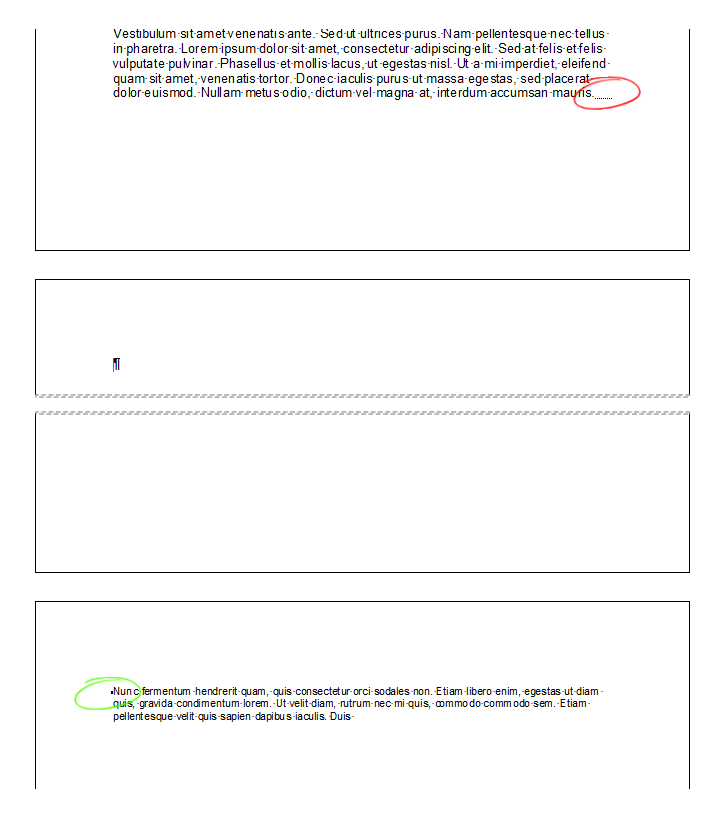Dynamically generated documents may accidentally contain empty pages for a variety of technical reasons. Consistent cleanup is necessary to maintain clean documents.
TX Text Control provides a C# solution for removing empty pages already TX Text Control .NET: Removing Empty Pages. However, implementing this in JavaScript provides more flexibility for web environments. By using JavaScript methods to remove empty pages, you can streamline your documents. They will be free of unwanted page break or section break characters.
Learn More
This article explains why to avoid forced page breaks in document templates and how to create templates that automatically adjust to the content using other word processing features.
Scenario: Forced Page Breaks
Consider the following example where one paragraph contains a forced page break (red circle) and the next paragraph always starts on a new page (green circle) because the Paragraph
╰ JavaScript API
╰ ParagraphFormat Object
╰ setPageBreakBefore Method
Sets whether the paragraph is always displayed on top of a page. property is set to true. This scenario would result in a blank page in the middle of a document.

JavaScript Solution
The removeEmptyPages function is an asynchronous JavaScript function that manages documents by iterating through each page in reverse order to check if the content length is one, which usually indicates a page break or section break. If a page is empty, it is deleted, and the function proceeds to check the previous page.
This is achieved by recursion, where the processPage function calls itself for the next page until all pages have been processed. Recursion is a technique used to solve a problem by creating a function that calls itself repeatedly until it reaches a base condition.
| function removeEmptyPages() { | |
| TXTextControl.pages.getCount(function(count) { | |
| function processPage(index) { | |
| if (index < 0) { | |
| return; | |
| } | |
| TXTextControl.pages.elementAt(index, function(page) { | |
| page.getLength(function(length) { | |
| // Check if the page is empty. | |
| if (length === 1) { | |
| page.getStart(function(start) { | |
| TXTextControl.select(start - 1, length, function() { | |
| TXTextControl.selection.setText('', function() { | |
| // After deleting, continue with the next page | |
| processPage(index - 1); | |
| }); | |
| }); | |
| }); | |
| } else { | |
| processPage(index - 1); | |
| } | |
| }); | |
| }); | |
| } | |
| // Start processing from the last page | |
| processPage(count - 1); | |
| }); | |
| } |
Conclusion
Removing empty pages from documents is a common requirement when generating documents dynamically. By using JavaScript, you can implement a solution that removes empty pages from documents created with TX Text Control.






